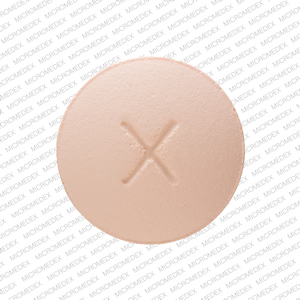Felodipine Disease Interactions
There are 4 disease interactions with felodipine.
CCBs (applies to felodipine) cardiogenic shock/hypotension
Major Potential Hazard, High plausibility.
In general, calcium channel blockers (CCBs) should not be used in patients with hypotension (systolic pressure < 90 mm Hg) or cardiogenic shock. Due to potential negative inotropic and peripheral vasodilating effects, the use of CCBs may further depress cardiac output and blood pressure, which can be detrimental in these patients. The use of verapamil and diltiazem is specifically contraindicated under these circumstances.
CCBs (applies to felodipine) coronary artery disease
Major Potential Hazard, Low plausibility. Applicable conditions: Ischemic Heart Disease
Increased frequency, duration, and/or severity of angina, as well as acute myocardial infarction, have rarely developed during initiation or dosage increase of calcium channel blockers (CCBs), particularly in patients with severe obstructive coronary artery disease and those treated with immediate-release formulations. The mechanism of this effect is not established. Therapy with CCBs should be administered cautiously in patients with significant coronary artery disease.
CCBs (applies to felodipine) liver disease
Major Potential Hazard, High plausibility.
Calcium channel blockers (CCBs) are extensively metabolized by the liver. The half-lives of CCBs may be prolonged substantially in patients with severe hepatic impairment, with the potential for significant drug accumulation. In addition, the use of some CCBs has been associated with elevations in serum transaminases, both with and without concomitant elevations in alkaline phosphatase and bilirubin. While these effects may be transient and reversible, some patients have developed cholestasis or hepatocellular injury. Therapy with CCBs should be administered cautiously and often at reduced dosages in patients with significantly impaired hepatic function. Periodic monitoring of liver function is advised.
CCBs (applies to felodipine) CHF/AMI
Moderate Potential Hazard, Moderate plausibility. Applicable conditions: Congestive Heart Failure, Myocardial Infarction
Calcium channel blockers (CCBs) may have varying degrees of negative inotropic effect. Congestive heart failure (CHF), worsening of CHF, and pulmonary edema have occurred in some patients treated with a CCB, primarily verapamil. Some CCBs have also caused mild to moderate peripheral edema due to localized vasodilation of dependent arterioles and small blood vessels, which can be confused with the effects of increasing left ventricular dysfunction. Although some CCBs have been used in the treatment of CHF, therapy with CCBs should be administered cautiously in patients with severe left ventricular dysfunction (e.g., ejection fraction < 30%) or moderate to severe symptoms of cardiac failure and in patients with any degree of ventricular dysfunction if they are receiving a beta-adrenergic blocker. Likewise, caution is advised in patients with acute myocardial infarction and pulmonary congestion documented by X-ray on admission, since associated heart failure may be acutely worsened by administration of a CCB.
Felodipine drug interactions
There are 488 drug interactions with felodipine.
Felodipine alcohol/food interactions
There are 3 alcohol/food interactions with felodipine.
More about felodipine
- felodipine consumer information
- Check interactions
- Compare alternatives
- Pricing & coupons
- Reviews (19)
- Drug images
- Side effects
- Dosage information
- During pregnancy
- Drug class: calcium channel blockers
- Breastfeeding
- En español
Related treatment guides
Drug Interaction Classification
| Highly clinically significant. Avoid combinations; the risk of the interaction outweighs the benefit. | |
| Moderately clinically significant. Usually avoid combinations; use it only under special circumstances. | |
| Minimally clinically significant. Minimize risk; assess risk and consider an alternative drug, take steps to circumvent the interaction risk and/or institute a monitoring plan. | |
| No interaction information available. |
Further information
Always consult your healthcare provider to ensure the information displayed on this page applies to your personal circumstances.


